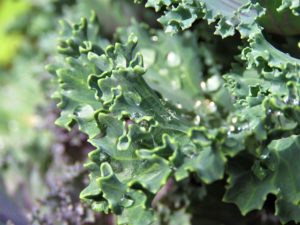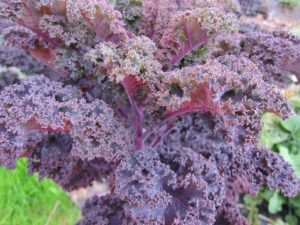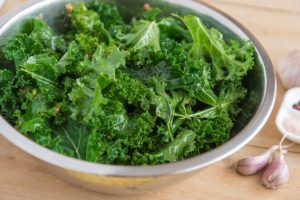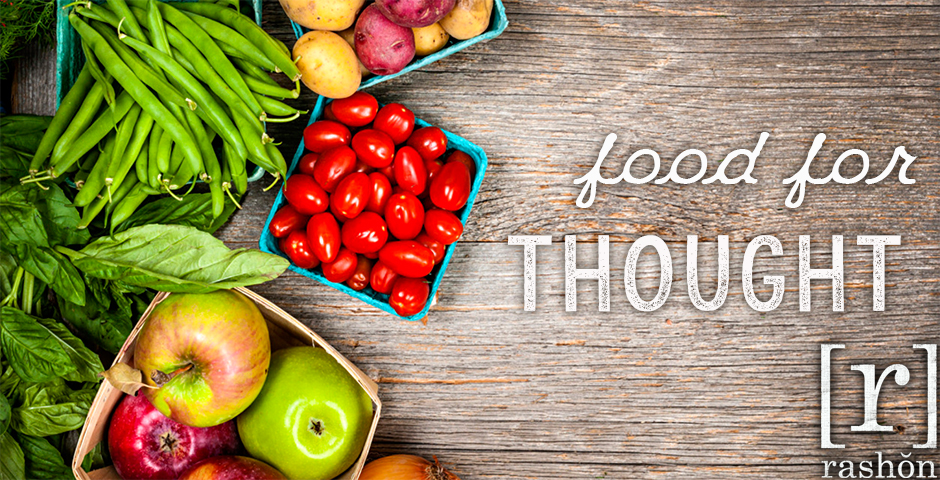Eating leafy greens is vitally important for our health. Spinach, arugula, chard, cabbage, Brussels sprouts, parsley, dandelion greens, mustard greens, beet greens, cilantro, and kale are just a few examples of leafy greens. They are packed with nutrients, antioxidants, phytonutrients, fiber, have cancer-fighting properties and are our greatest source of dietary nitrates. Antioxidants inhibit oxidation and fight free radicals in the body. Some benefits of antioxidants include:
- Slower signs of aging, including of the skin, eyes, tissue, joints, heart and brain
- Healthier, glowing skin
- Reduced cancer risk
- Detoxification support for the body
- Longer life span
- Protection against heart disease and stroke
- Less risk for cognitive problems, such as dementia
- Reduced risk for vision loss or disorders like macular degeneration and cataracts
Kale has made a major appearance on menus in the past several years, and it’s one of those things that people tend to love or hate. I know many people think kale has had it’s moment, but I love it, and it’s packed with nutrients. It’s definitely a staple in my kitchen, and is on many of the meal plans I create for my clients. There are so many ways to incorporate it into your diet, but first let’s talk a little bit more about it, and why it’s so good for you.

Kale is a member of the cruciferous, or cabbage family which includes mustard greens, turnip greens, and watercress. It is almost exactly the same vegetable as collards, only kale has leaves with curly edges and is less tolerant to heat. There are several varieties of kale. Curly kale has ruffled leaves and a fibrous stalk, and is deep green in color. This type of kale has a deep, earthy flavor and also has delicious bitter, peppery notes. Ornamental kale is a newly cultivated species, and may be green, white or purple in color. It has a milder flavor and more tender texture than other types of kale. Dinosaur, or Lacinto, kale has dark blue-green leaves that have an embossed-like texture on the leaves. It has a slightly more delicate flavor than curly kale.

Kale is among the most highly nutritious vegetables. It is an excellent source of carotenes, vitamins C, B6, B1, B2, E and manganese. It is a good source of fiber and dietary nitrates, as well as minerals including copper, iron and calcium. Kale has almost three times as much calcium as phosphorus, which is a key ratio in supporting bone health. One cup of kale contains 70% of the recommended daily intake for calcium. Kale has the same sort of anticancer properties as other members of the cabbage family, and is also extremely high in chlorophyll, beta-carotene, lutein and zeaxanthin, which are potent antioxidants.
How to Incorporate: Kale
- Use as the base for salads, or as part of a mix with spinach, arugula or other dark lettuces.
- Throw a handful of kale into the blender with smoothie ingredients, or include as part of a green juice.
- Mix chopped kale into quinoa along with lemon juice and pine nuts for a delicious side dish.
- Add kale into scrambled eggs, egg muffins or frittatas.
- Massage it! Put raw, chopped kale into a bowl. Add in a drizzle of avocado or olive oil, a splash of vinegar (apple cider vinegar, champagne vinegar, red wine vinegar are just a few examples) or lemon juice, and massage the kale. It helps to break down the leaves, and completely transforms/mellows the flavor.
- Mix kale into your favorite pasta dish. It will wilt down, but add texture and a punch of nutrients to the dish.
- Add it into chicken or veggie soup. (Actually, there are lots of soups that would be delicious with kale.)
- Wilt the kale in a pan with garlic, lemon juice and sprinkle of salt a pepper for a quick and easy side dish.
- Use kale just as you would spinach in side dishes, salads and recipes that call for spinach.
- Make kale chips! There are tons of recipes online for this, and it’s super easy to do. You can also buy kale chips in most grocery stores – just check for clean ingredients.
These are just a few ways to incorporate kale into your meals. Given that kale is such a nutritional powerhouse, it’s worth taking the time to find your favorite ways to prepare it, and make sure it’s part of your eating plan a few times a week!
Tell me: What’s your favorite dish with kale?




0 Comment